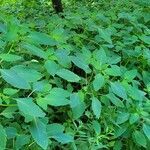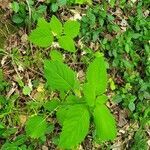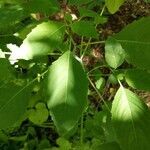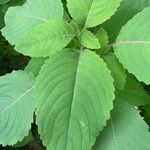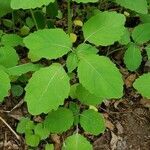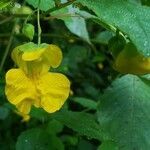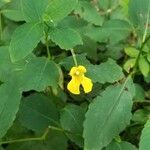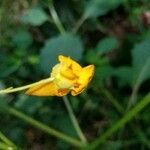A tall annual herb. It grows 60 cm to 1.5 m high. It spreads 30-60 cm wide. The stems are succulent and hairless. The leaves are grey-green and have coarse teeth. The flowers hang down and are yellow. They are in clusters in the axils of upper leaves. The fruit are long cylinder shaped capsules.
